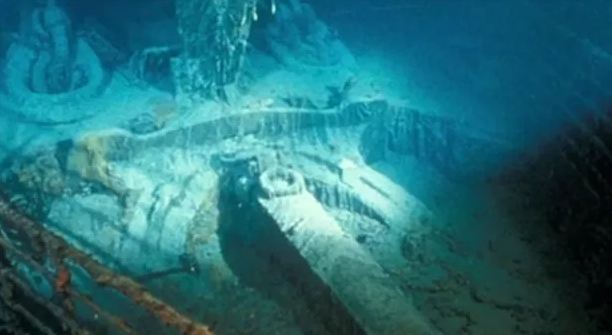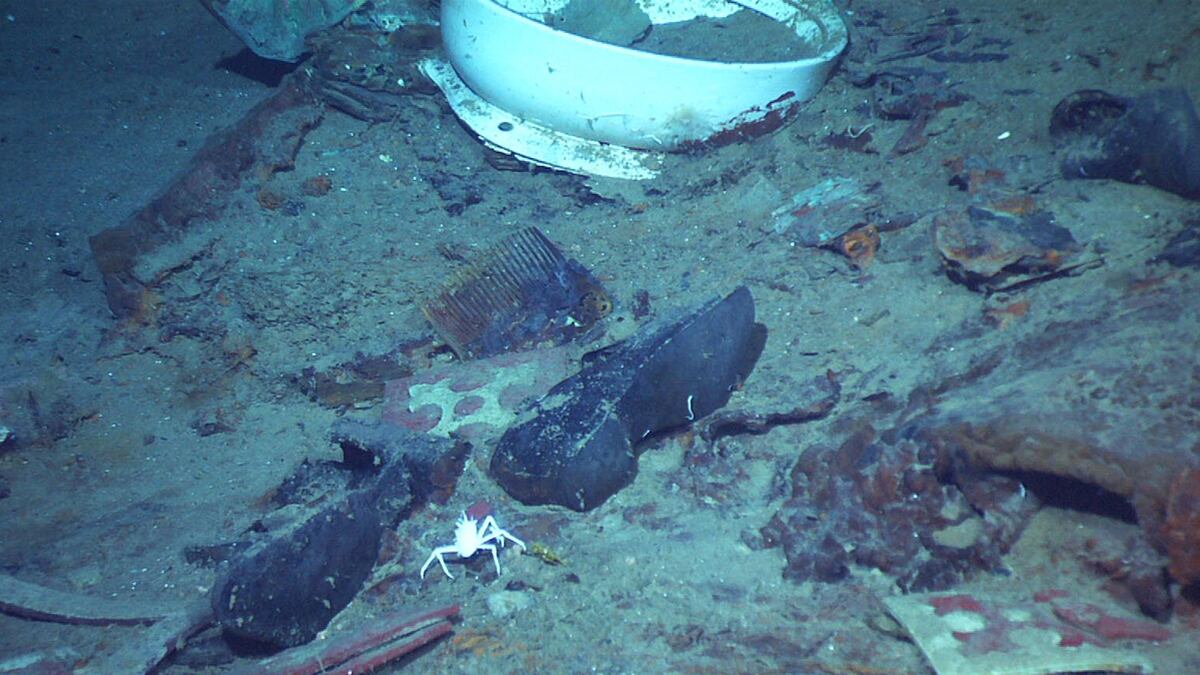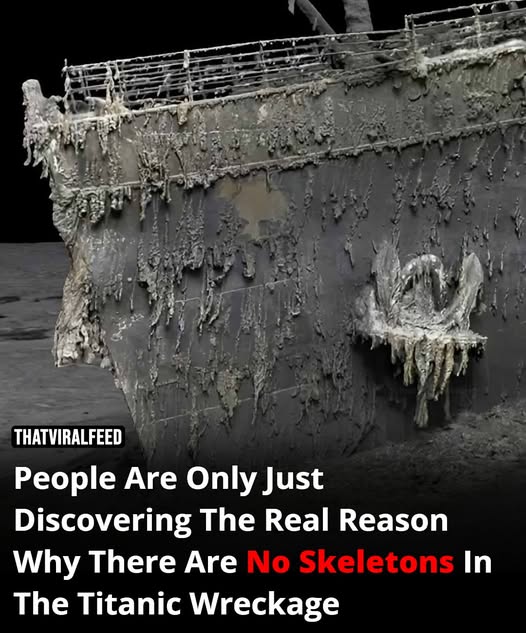More than a century after the Titanic sank in April 1912, the wreckage remains one of history’s most haunting sites. Despite an estimated 1,517 lives lost, explorers have never discovered human skeletons among the debris—a chilling reality that has puzzled many.
Why No One Sunk to the Bottom Intact
After the ship sank beneath icy Atlantic waters, some passengers died from hypothermia in lifejackets while others remained trapped inside. One might expect at least some remains to persist at the site. Yet each expedition, including director James Cameron’s 33 dives, has consistently reported zero sighting of human bones—only clothing, personal items, and especially pairs of shoes. Cameron himself confirmed: “I’ve seen zero human remains… We’ve seen clothing. We’ve seen pairs of shoes… but we’ve never seen any human remains.”

Depth and Chemical Assault on Bones
The most accepted explanation comes from oceanographer Robert Ballard, who first located the wreck in 1985. He cited the calcium carbonate compensation depth (CCD)—around 3,000 feet—below which seawater becomes undersaturated with calcium carbonate, the main mineral in bones. At roughly 3,800 meters (12,500 feet) deep, the Titanic lies well beneath the CCD. Bacterial scavengers strip away flesh, and any bones exposed afterward dissolve in the acidic seawater—a process Ballard says also explains the absence of skeletons on another deep wreck, the Bismarck.
Scavengers and Ocean Currents
In addition to chemical dissolution, deep-sea scavengers—creatures specialized in consuming organic remains—feast on human bodies until only bones remain. But even these bones cannot endure the harsh environment; they gradually disintegrate under continuous chemical attack. Bodies drifting in lifejackets were buffeted by stormy seas and strong currents immediately after the sinking, spreading remains far from the wreck and accelerating decomposition before reaching the deep seabed.
What Still Remains
While bones vanish, other items endure. Preserved shoes, leather goods, buttons, and clothing still litter the ocean floor around the ship—testifying to the personal stories lost beneath the waves. NOAA archaeologist James Delgado notes that some boots appear to still have sediment within them—suggesting former occupants—but no trace of human bones accompanies them.
Could Bodies Hide Inside?
Some experts believe skeletal remains might be hidden within airtight compartments of the ship—engine rooms or sealed cabins—protected from scavengers and currents. However, the deep chemical dissolution makes it unlikely any bones remain intact after more than 110 years .
The Ethical Considerations
Recovering artifacts from the Titanic has provoked debate—are we disturbing a mass grave or preserving history? With no human remains visible, many argue retrieving personal items is more acceptable. In 2024, the Biden administration considered stronger protections for the wreck, recognizing it as both a historical site and a final resting place .
Final Thoughts: Nature’s Relentless Process
What happened to the Titanic’s souls remains a solemn reminder of deep-sea forces. The extreme pressure, chemical composition, scavengers, and time have ensured no bones linger—only artifacts, slowly disappearing as metal-eating bacteria devour the ship hull.

Conclusion
Though explorers occasionally glimpse boots and belongings, the absence of skeletal remains highlights the brutal efficiency of nature’s recycling at oceanic depths—reminding us that sometimes, the deepest mysteries lie not in what remains, but in what the sea has reclaimed.

















